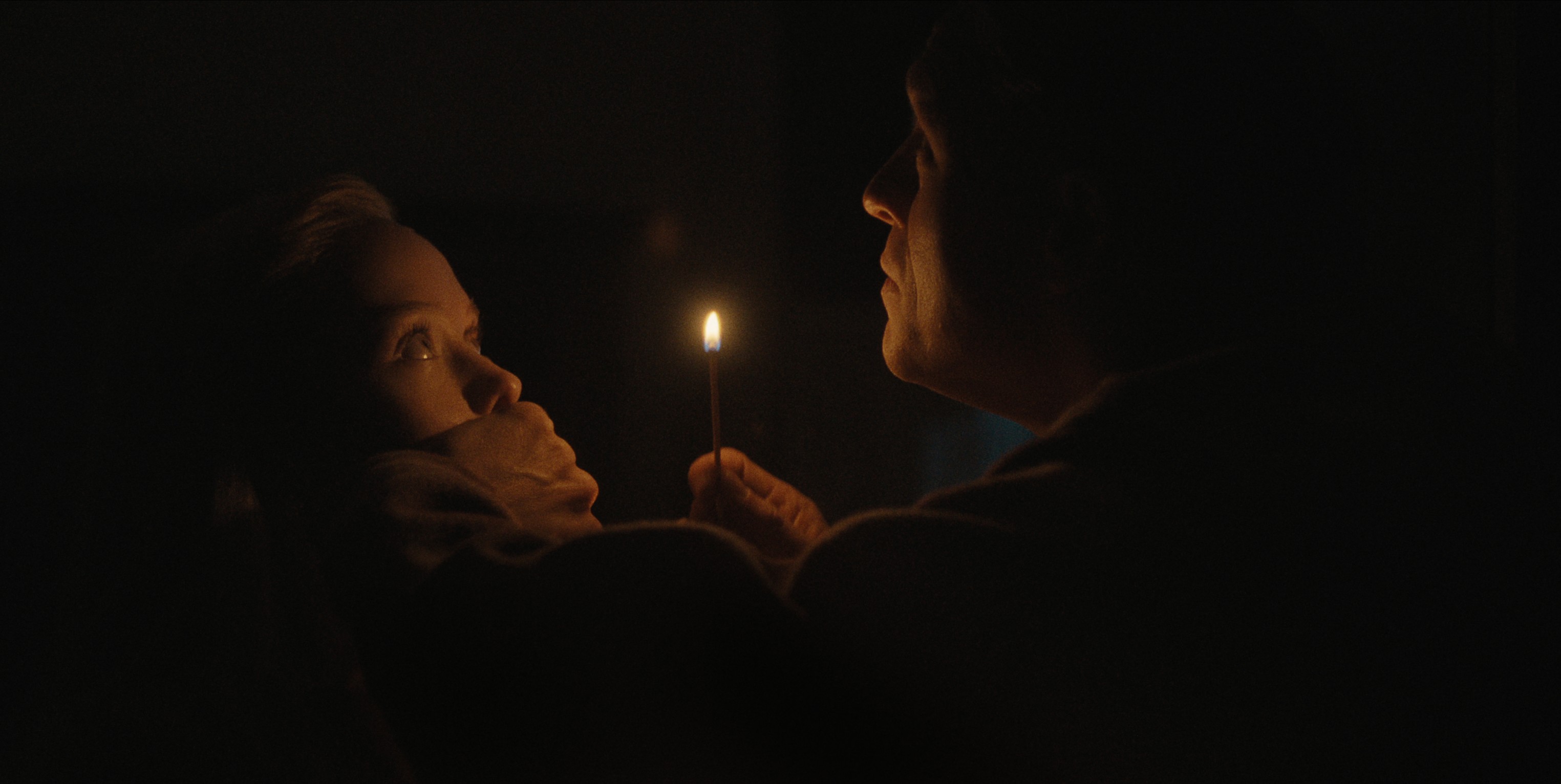Created by Ian Brennan and Ryan Murphy, Netflix’s ‘Monster: The Ed Gein Story’ adds another chapter to the ‘Monster’ series, which includes ‘The Jeffrey Dahmer Story’ and ‘The Lyle and Erik Menendez Story.’ This season chronicles the life of Ed Gein, one of the most feared serial killers of all time, whose murder and body-snatching spree continues to inspire horror in the present. The biographical crime drama frames Ed’s lived experience as part of a larger cultural phenomenon, which involves popular artists borrowing from his body of work to redefine the human condition as a whole. In doing so, we learn several new perspectives on the serial killer’s past, with a commentary on nature versus nurture constantly running in the background. The character of Adeline Watkins ends up playing a key role in the narrative, and her relationship with Ed sheds light on the shape and size of his criminal identity. SPOILERS AHEAD.
Ed and Adeline’s Dynamic Does Not End in Her Death
While Adeline’s death at the hands of Ed is teased multiple times in the show, she ultimately does not end up as one of his victims. Instead, the duo gradually drifts apart, with the serial killer’s arrest serving as the point where their paths separate. At the start of the season, Adeline stands out as the only person outside her family who not only familiarizes herself with Ed but also indulges his darker side. The two form a special bond over their shared fascination with death, and with every killer that she introduces him to, Ed’s impulses continue to grow stronger. Eventually, Ed and Adeline get engaged, and not long after, she learns of her partner’s ghastly practices with human bodies. However, instead of being horrified by them, Adeline shows interest and gradually becomes a pseudo-accomplice in the serial killer’s criminal pursuits. While the threat of him killing her along the line doesn’t quite go away, Ed’s arrest and subsequent transformation extinguish that possibility entirely.

The idea of Adeline being murdered receives numerous creative visualizations, with none turning into reality. The most notable one of the blends is an imagined sequence of her death with the iconic twist in ‘Psycho,’ where Adeline doubles as a character who is stabbed to death. On other occasions, Ed doesn’t shy away from exerting his physical superiority over her, with even the simplest of his actions turning into threats. This reaches its climax when Adeline discovers the dead body placed in Augusta Gein’s stead. While it appears for a moment that Ed is prepared to ambush and murder his partner in cold blood, the reality turns out to be different, and he instead reveals the complete truth. As such, the use of a death scare in many of Adeline’s scenes is an intentional decision by the creative team, as it serves to amplify the narrative stake while also setting up the eventual subversion of expectations regarding her sensibilities.
Adeline and Ed Turn Out to be Two Peas in a Pod
In the final moments of the show, Ed and Adeline’s paths align once again, and she pays him a special visit while in the hospital, revealing the exact reason behind her absence from his life. While the public scrutiny surrounding Ed definitely plays a part in her maintaining her distance, Adeline explains that she has been diagnosed with a mental health condition, which leads to intense manic episodes, followed by long periods of depression. These conditions eventually take a toll on her psyche, leading to the present, where her homicidal desires appear to take complete form. She shows her former lover a list she wrote in a manic state, containing the names of people she believes she has to kill. However, in this moment, Ed distances himself from the idea, explaining that she must never make the same mistakes he did. This turn in the narrative lifts her from the status of a potential victim and introduces the idea of Adeline being a potential equal to the serial killer.

What makes Ed and Adeline’s relationship particularly tragic is that he questions whether she was a real person in the first place. During his treatment at the hospital, Ed becomes aware of his Schizoid Personality Disorder, which causes him to hallucinate and enables his participation in untold acts of horror and cruelty. This revelation puts his previous actions in a new light, forcing him to retrace his steps and distinguish facts from fiction. His past mental state, coupled with Adeline’s prolonged absence from his life, compels Ed to believe that she was a fabrication of his mind. Given how much his relationship with Adeline means to him, this possibility comes as a significant hit for the serial killer and is only dispelled when the two reunite. Their final exchange in the story, as such, becomes a moment of reflection, not just on their individual lives but also on the nature of violence as a whole.
Read More: Monster: Are Ed Gein’s Skin Suit and Face Mask Real, Prosthetic or CGI?


